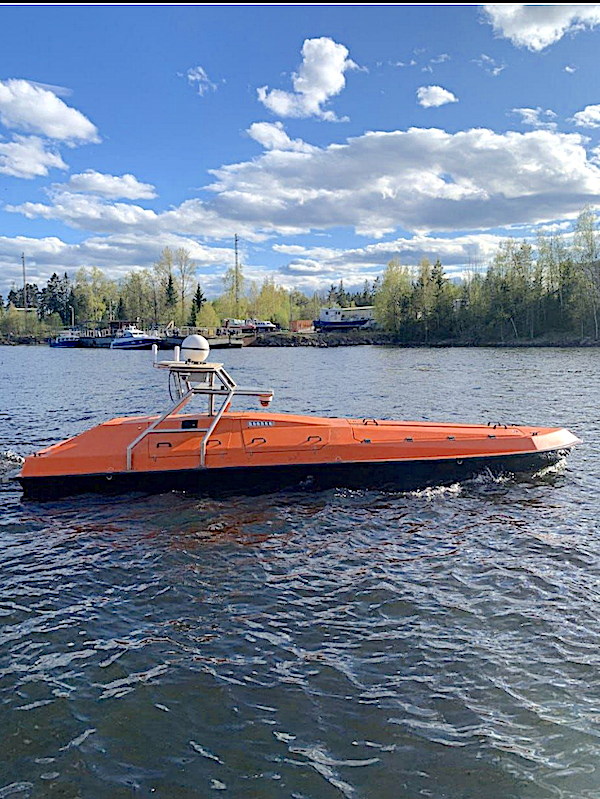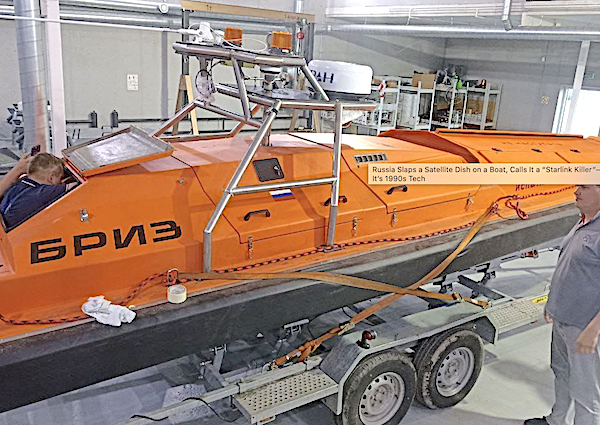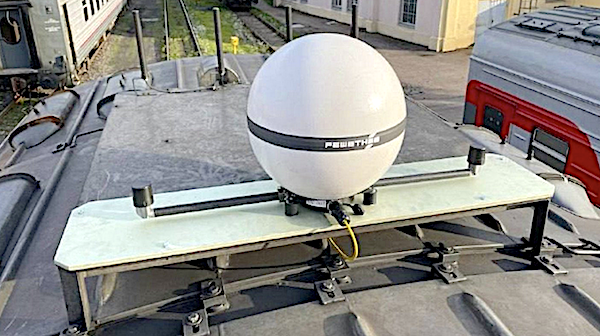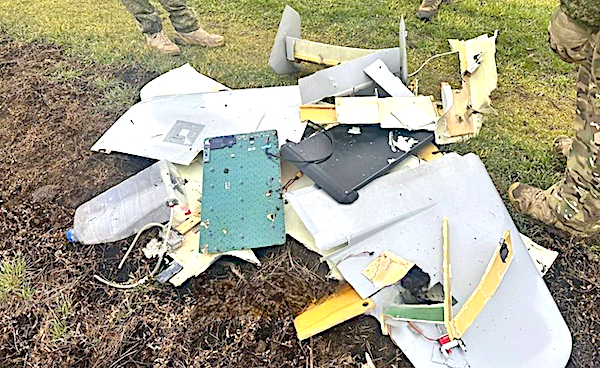
Russia has introduced a new maritime drone called “Breeze” equipped with satellite communication technology, presenting it as a domestic alternative to Starlink.
However, the system appears to rely on outdated communication methods that could severely limit its practical military use.
According to Defense Express on July 12, Russian companies Sea Project and Unmanned Logistics recently tested the Breeze drone in the White Sea. Designed for transporting cargo to remote northern regions, the drone is slated for production in Arkhangelsk region.

Notably, its communication system includes a Simrad maritime radar and a spherical antenna housing the new RS-30M satellite terminal—previously tested on a train.
Russia has positioned the RS-30M as its answer to the American Starlink system, but several critical limitations suggest otherwise. Unlike Starlink, which uses a constellation of low-Earth orbit satellites positioned roughly 550 km above Earth, the RS-30M connects to satellites in geostationary orbit—approximately 36,000 km away.
While this allows for broad coverage, it introduces significant drawbacks, including signal latency as high as 800 milliseconds and limited bandwidth of only a few megabits per second. In contrast, Starlink typically offers latency around 40 milliseconds and speeds exceeding 200 Mbps.
In addition, the RS-30M relies on a mechanical, parabolic antenna that must be physically aligned with a satellite, a method largely phased out in modern systems. Starlink’s phased array antenna enables dynamic, software-based tracking without moving parts—technology commonly found on next-generation UAVs.

In effect, the RS-30M reflects a technological regression. Similar SATCOM systems were installed on US military drones like the MQ-1 Predator in the 1990s. Modern drones such as the MQ-9 Reaper now use significantly more advanced antenna systems with greater performance.
Due to these limitations, the RS-30M is unlikely to support high-quality real-time video streaming or provide the responsiveness required for controlling high-speed, long-range unmanned systems—especially suicide drones such as Russia’s Shahed-type platforms.
In comparison, Ukraine has already demonstrated practical battlefield integration of Starlink-based communication systems in platforms like the RUBAKA and UJ-26 “Bober.”

If Russian developers eventually achieve stable satellite control of sea-based drones using RS-30M, this could introduce competition for Ukraine’s naval drone capabilities. For now, however, the Breeze drone appears limited to civilian logistics tasks, at least officially.
It joins a broader trend of Russia adapting maritime drone concepts—such as the earlier “Katran,” which shares its name and general layout with a Ukrainian system but relies solely on radio-based control, bringing additional vulnerabilities.
Despite the announcement, the RS-30M system—both in concept and performance—remains behind current-generation standards.
Earlier, Russia’s Karbyshev Military Engineering Academy patented a foldable tank screen nearly identical to Ukraine’s improvised “hood” anti-drone armor—originally developed to counter FPV and loitering munitions. Despite mimicking the Ukrainian design, the Russian patent claims it to be “1.5 times more effective.”
From United24 by Ivan Khomenko
